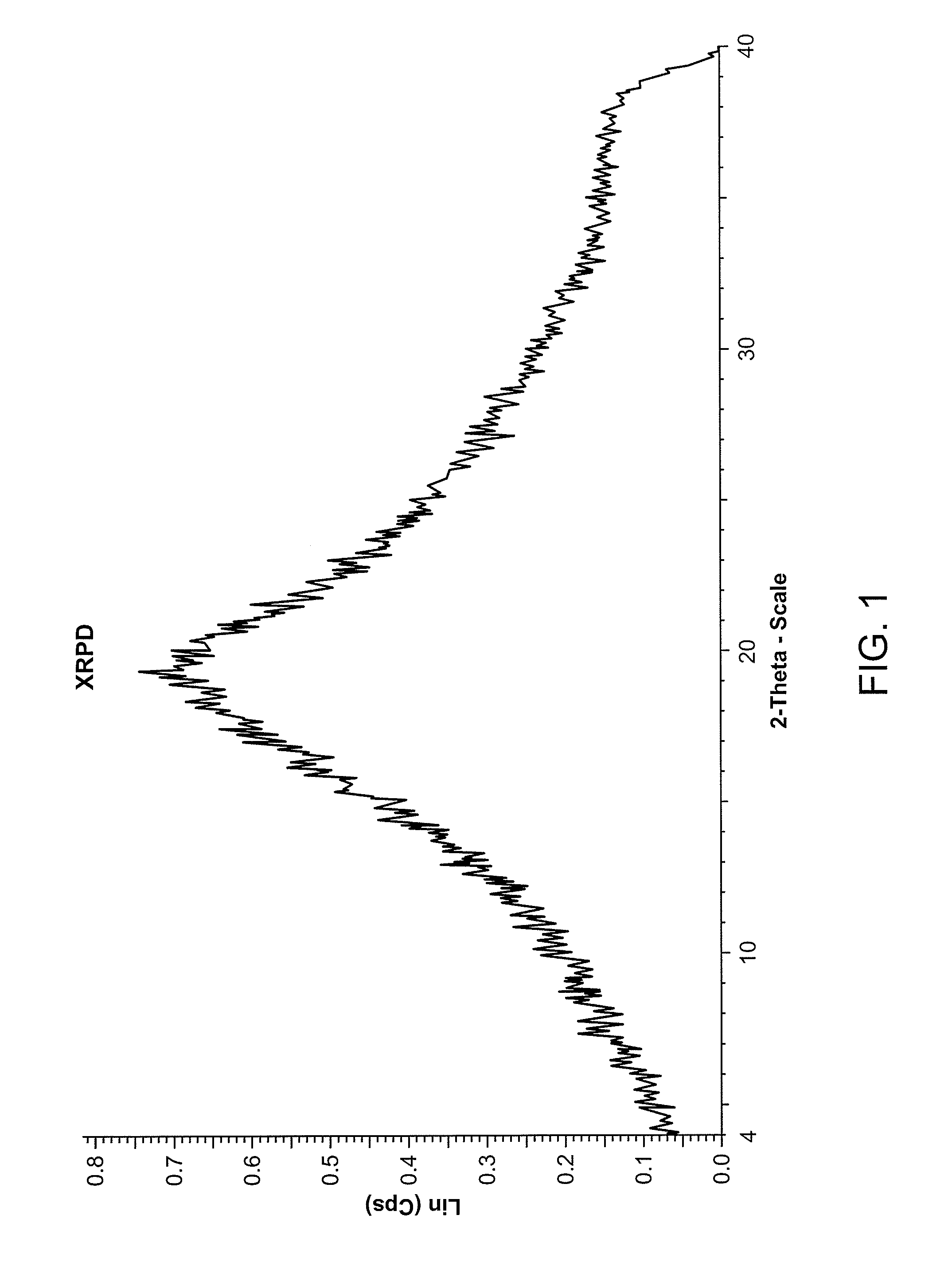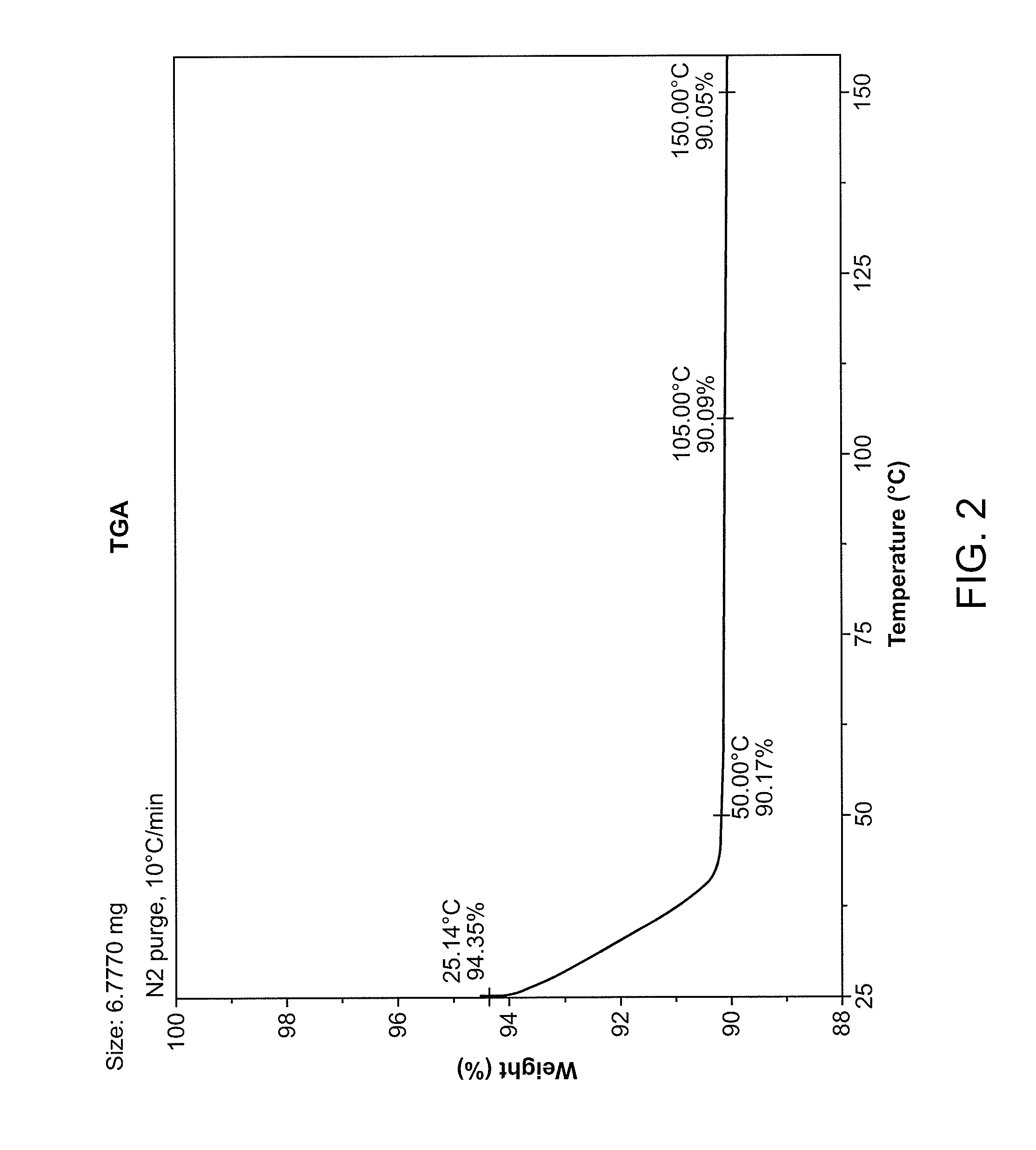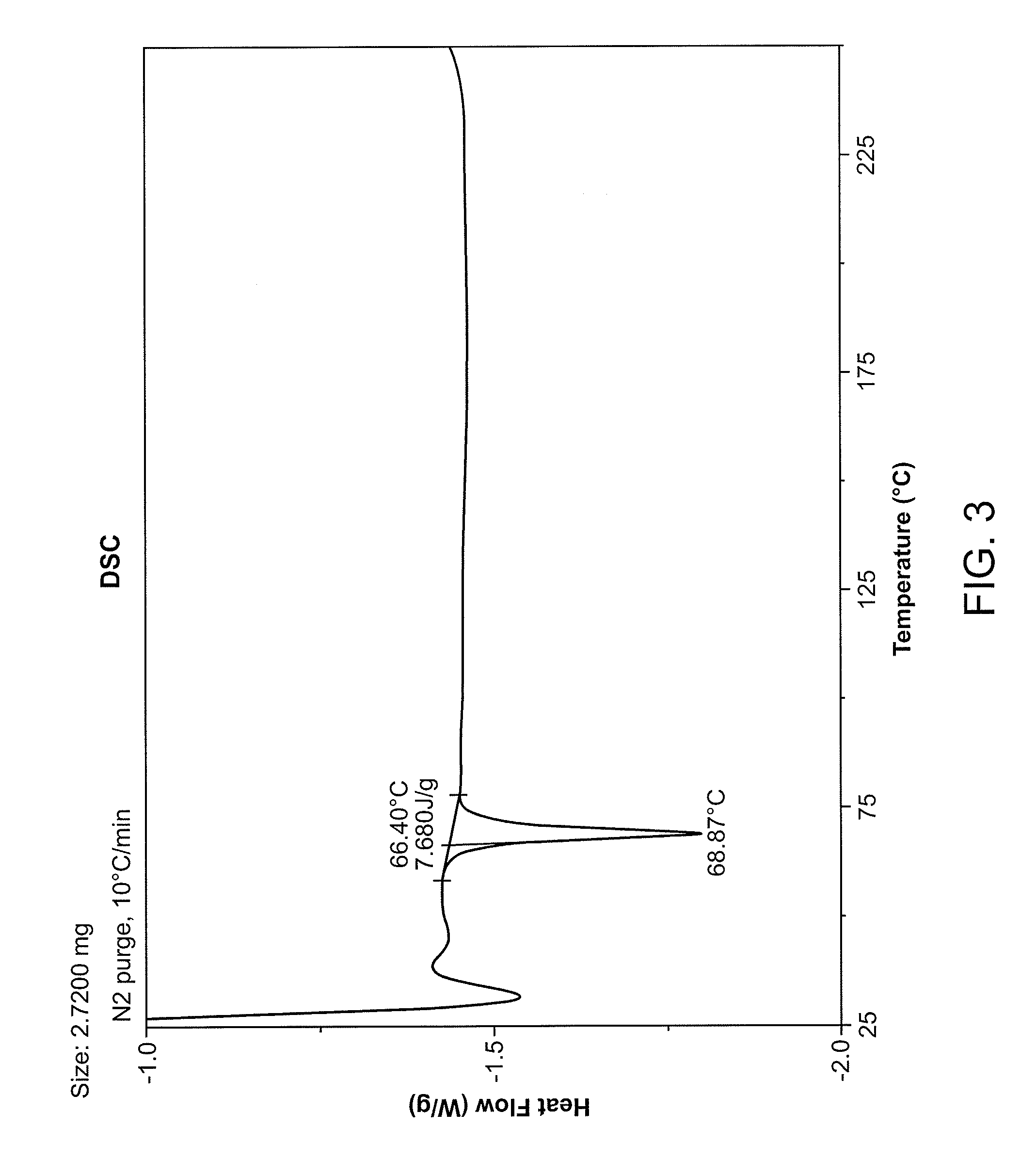Solid forms and process for preparing
a technology of solid forms and process, applied in the direction of biocide, heterocyclic compound active ingredients, drug compositions, etc., can solve the problem of inability to produce solid forms of compound 1
- Summary
- Abstract
- Description
- Claims
- Application Information
AI Technical Summary
Benefits of technology
Problems solved by technology
Method used
Image
Examples
example 1
Precipitation of Formula I from Single-Solvent Mixtures
[0028]The compound of Formula I was dissolved in the solvent and subject to heat / cool cycles between room temperature and 50° C. (8 hour cycles) for 24 hours, followed by cooling at 4° C. for 24 hours, and cooling at −20° C. for another 24 hours.
[0029]
TABLE 1Precipitation from single solvent mixturesSolventProduct I1Product II2DichloromethaneClear SolutionOilChlorobenzeneClear SolutionOilTolueneClear SolutionOilAnisoleClear SolutionOilHeptaneGum—1,4-DioxaneClear SolutionOilTert-Butylmethyl ether2Clear SolutionOilButyl acetateClear SolutionOilIsopropyl acetateClear SolutionOilEthyl acetateClear SolutionOilMethyl isobutyl ketoneClear SolutionOilMethyl ethyl ketoneClear SolutionOilAcetoneClear SolutionOilEthanolClear SolutionOilMethanolClear SolutionGlass2-ButanolClear SolutionOil1-ButanolClear SolutionOil1-PropanolClear SolutionOil2-PropanolClear SolutionOil2-MethoxyethanolClear SolutionOilAcetonitrileClear SolutionOilTetrahydrofu...
example 2
Precipitation of Formula I from Solvent:Antisolvent Mixtures
[0030]Formula I was dissolved in a suitable solvent at room temperature. An anti-solvent was added in the appropriate ratio, and the slurry was stirred at room temperature (unless provided otherwise). Any solid that formed was isolated by filtration and dried.
[0031]
TABLE 2Precipitation from alcohol:antisolvent mixturesSolvent:AntisolventSolventAntisolventRatioProduct1MethanolWater1:1PrecipitateMethanolWater10:1 No precipitateEthanolWater1:1PrecipitateEthanolWater10:1 No precipitateEthanolCyclohexane21:2No precipitate1-PropanolWater1:1No precipitate1-PropanolWater10:1 No precipitate1-PropanolCyclohexane21:2No precipitate2-PropanolWater1:1Precipitate2-PropanolWater10:1 No precipitate1-ButanolWater2:1No precipitate2-ButanolWater2:1No precipitate2-MethoxyethanolWater1:1Precipitate2-MethoxyethanolWater10:1 No precipitate2-MethoxyethanolCyclohexane21:2No precipitate1Any precipitate formed is an amorphous precipitate.2Cooling from...
example 3
Precipitation of Formula I from Ethanol / Water
[0033]The precipitation was run under nitrogen. A 22-L baffled, jacketed reaction flask equipped with overhead stirrer, thermocouple, addition funnel, and Julabo HTU was rinsed with a mixture of 1 L of water and 0.25 L ethanol before use. Water was charged to the flask and stirred, with the Julabo setpoint at 20.0° C. Purified compound of Formula I from the rotovap bulb (381.1 g) was dissolved in ethanol (4.0 L), and the solution filtered thru a rinsed plug of glass wool into a rinsed Pyrex bottle. The rotovap bulb and funnel were rinsed with ethanol (0.3 L). The solution was mixed, and then transferred (in 500 mL portions) to the addition funnel. The solution was added in a thin stream over 1 h 48 min to the vigorously stirred water, generating a white precipitate. The temperature was held between 21 and 25° C. during addition of the compound of Formula I. The empty Pyrex bottle was rinsed with ethanol (50 mL), and the rinse added to the...
PUM
| Property | Measurement | Unit |
|---|---|---|
| dissociation constant | aaaaa | aaaaa |
| temperature | aaaaa | aaaaa |
| temperature | aaaaa | aaaaa |
Abstract
Description
Claims
Application Information
 Login to View More
Login to View More - R&D
- Intellectual Property
- Life Sciences
- Materials
- Tech Scout
- Unparalleled Data Quality
- Higher Quality Content
- 60% Fewer Hallucinations
Browse by: Latest US Patents, China's latest patents, Technical Efficacy Thesaurus, Application Domain, Technology Topic, Popular Technical Reports.
© 2025 PatSnap. All rights reserved.Legal|Privacy policy|Modern Slavery Act Transparency Statement|Sitemap|About US| Contact US: help@patsnap.com



